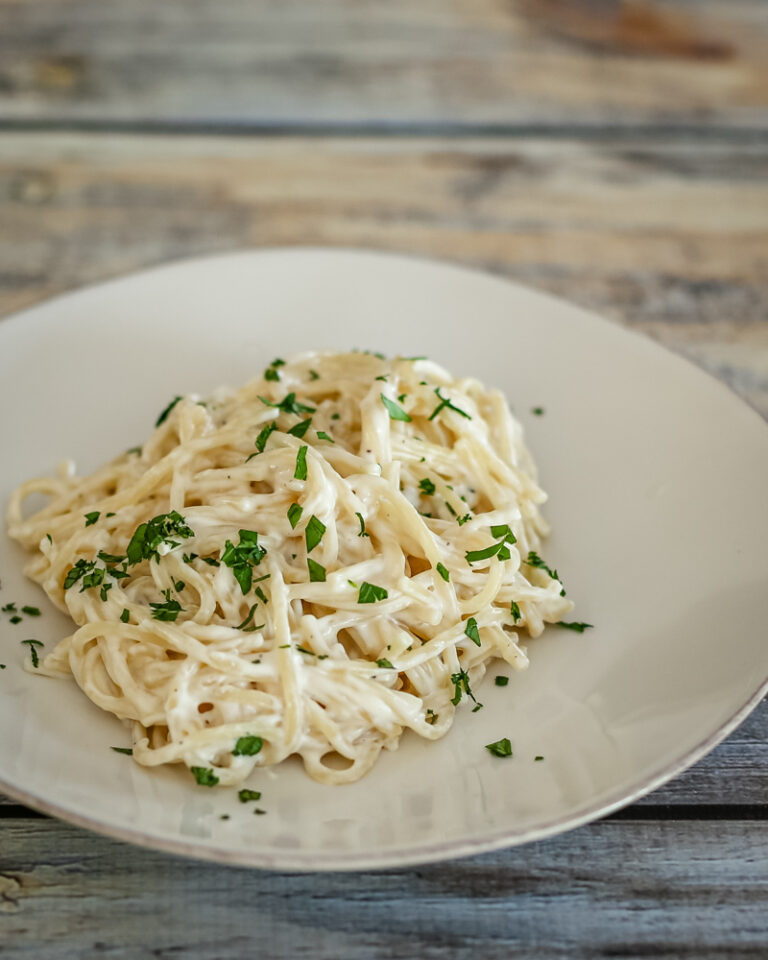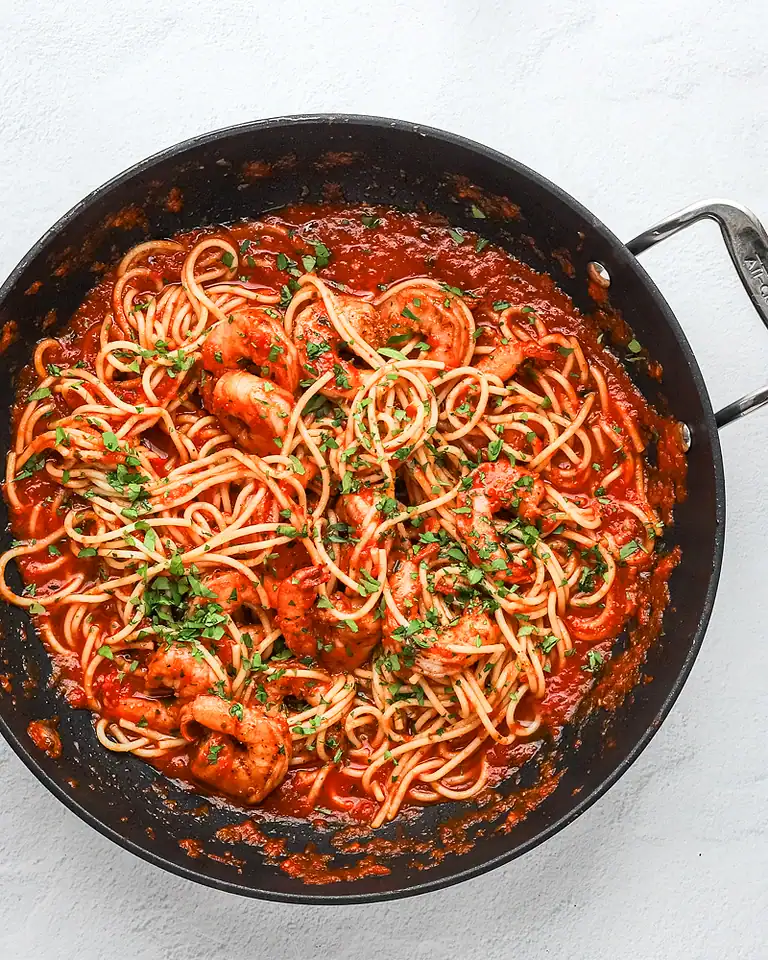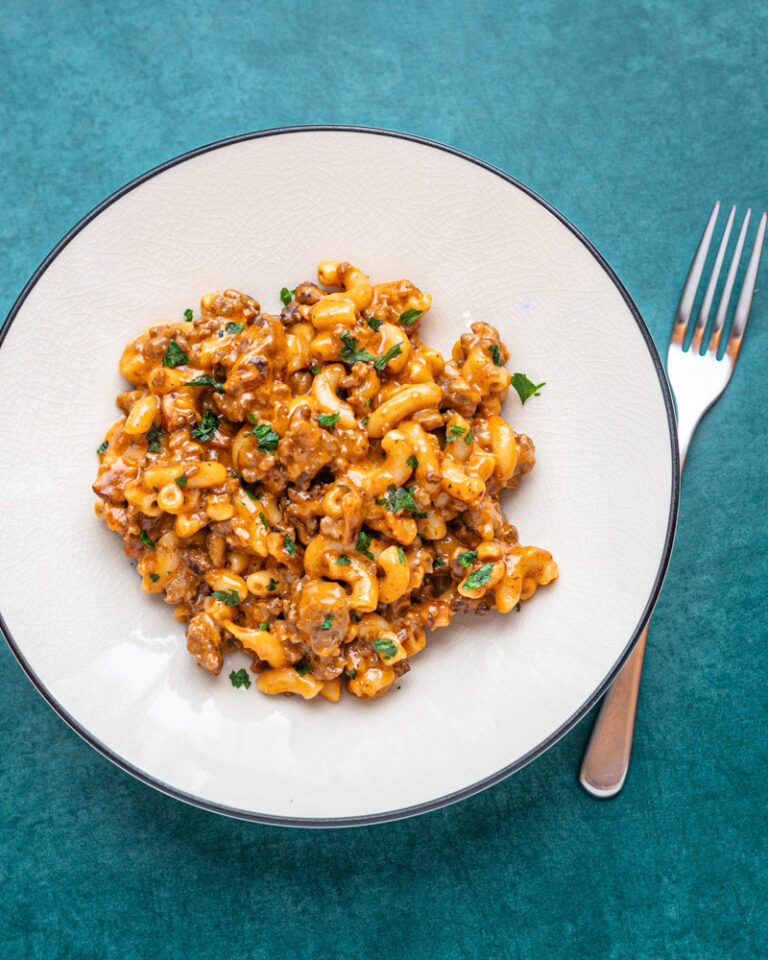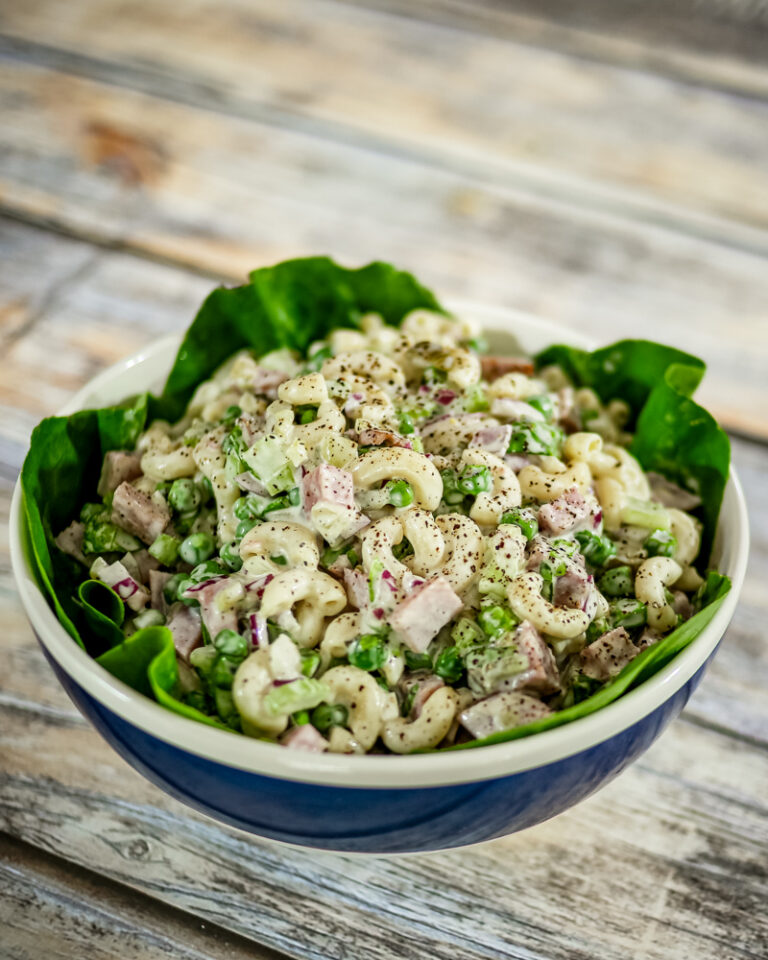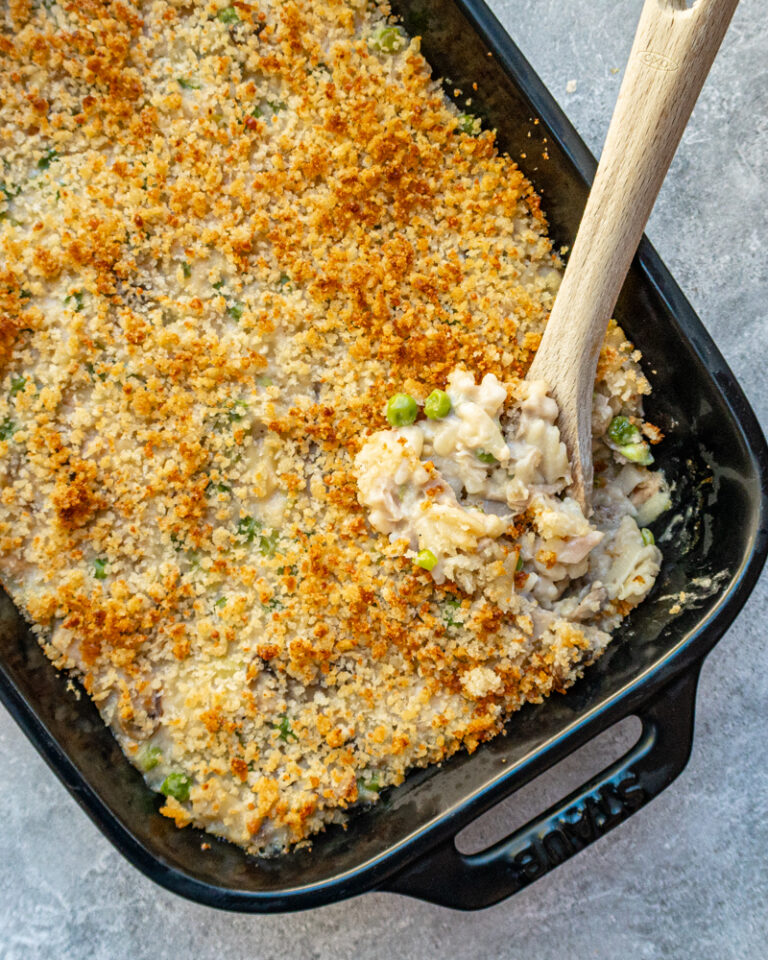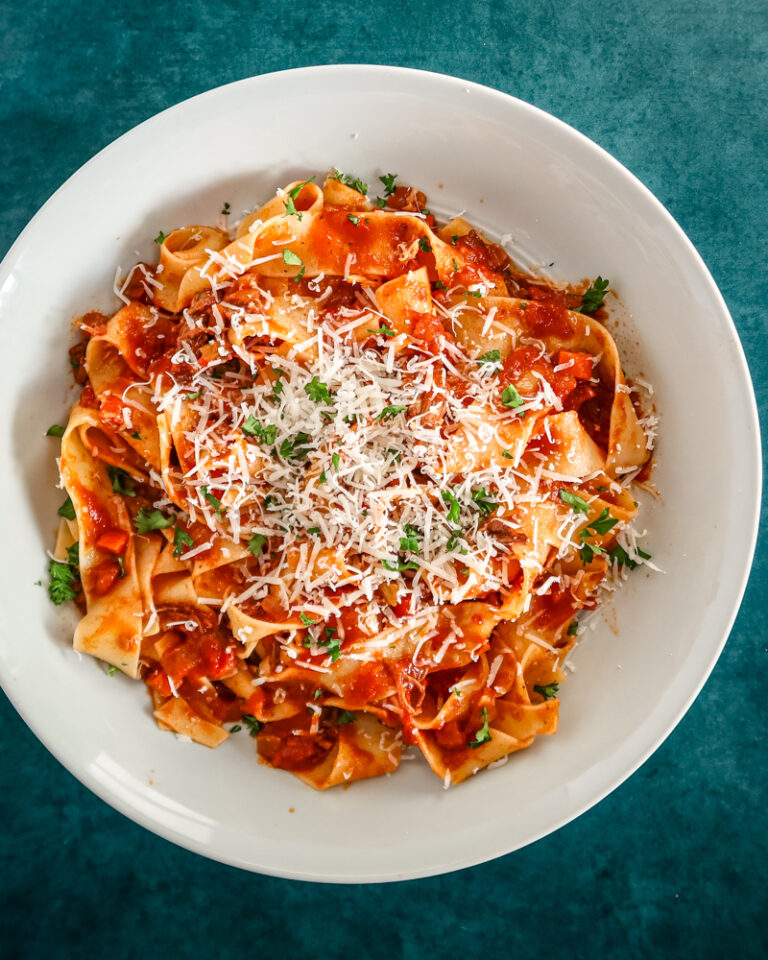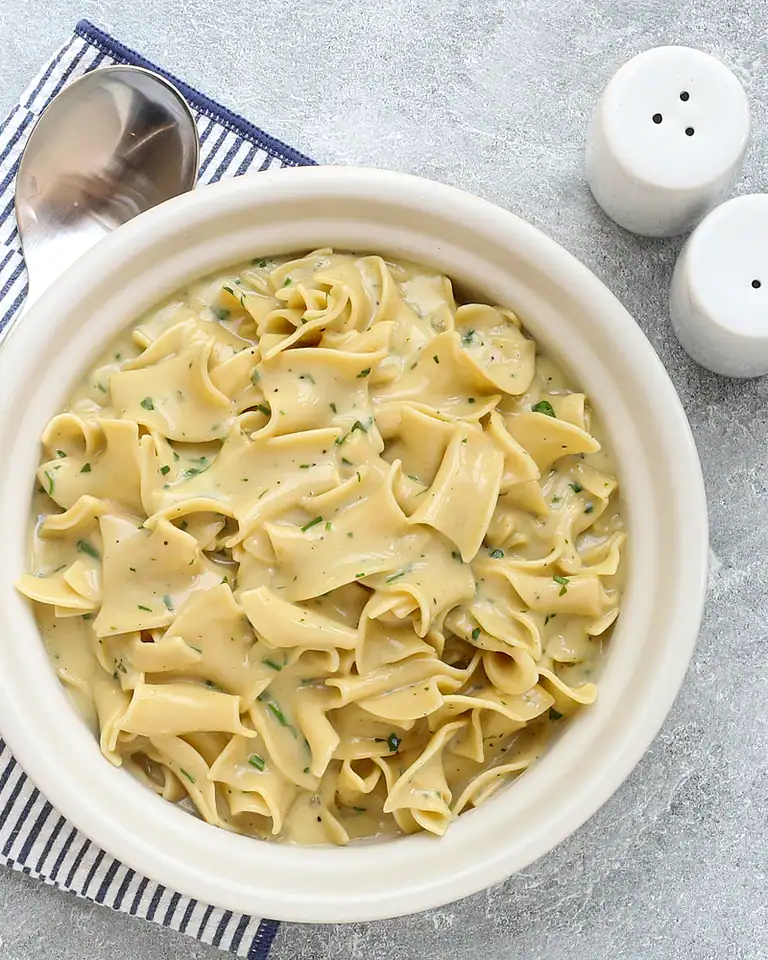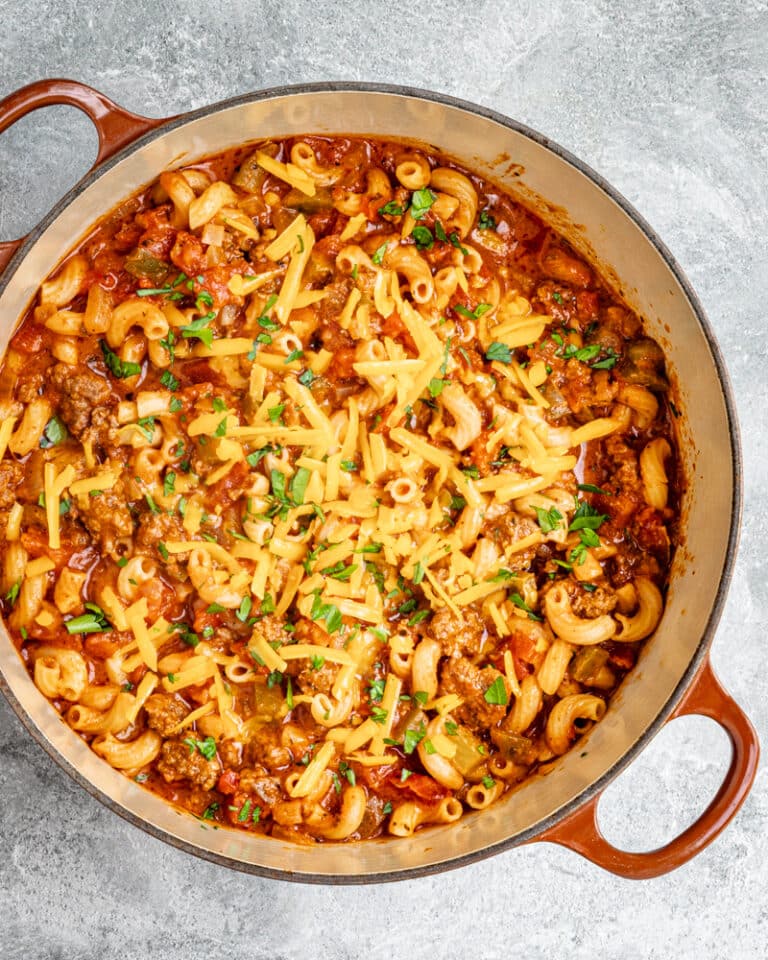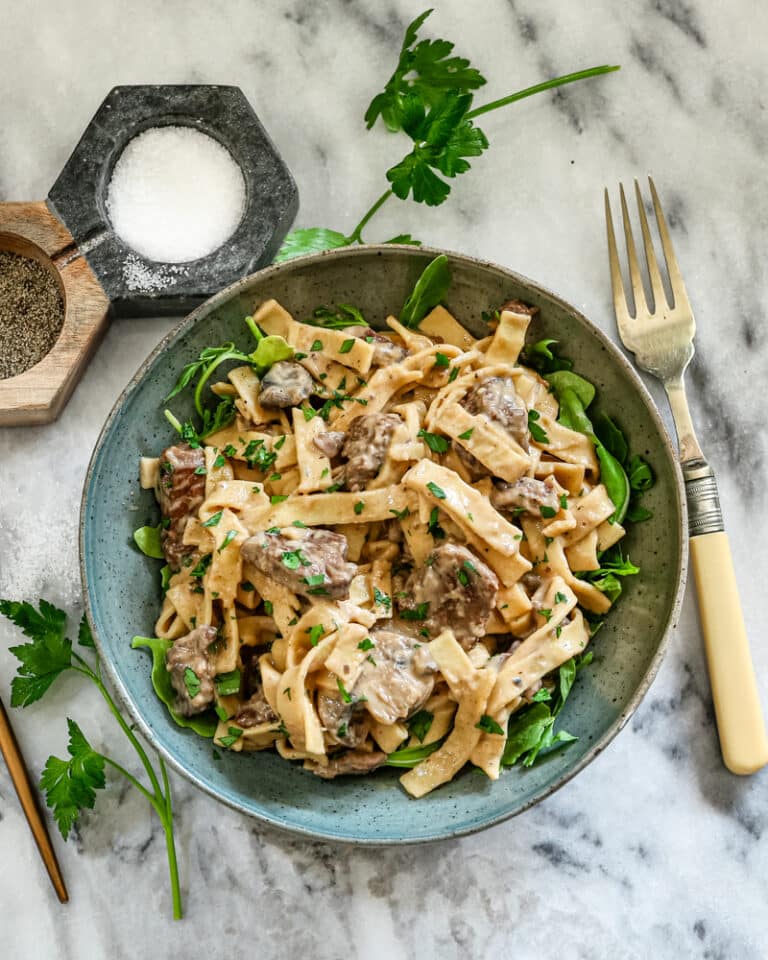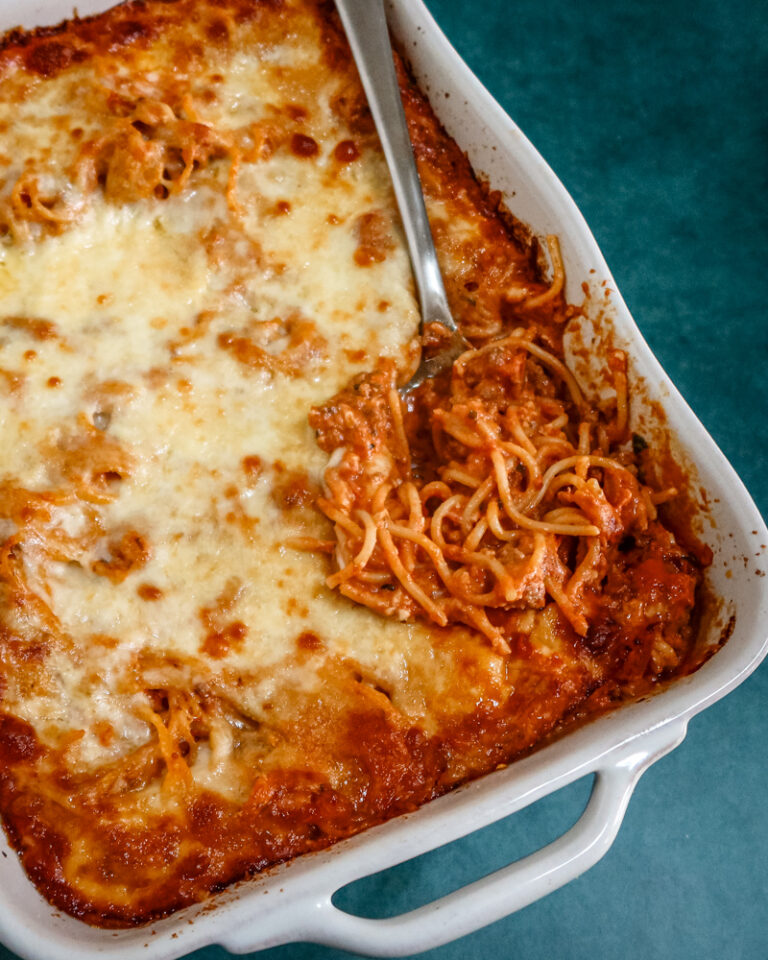Cacio e Pepe Recipe
Cacio e pepe pasta seems too simple to be good, but it is incredibly delicious! Use pecorino Romano cheese for the most authentic version of this traditional Roman pasta.
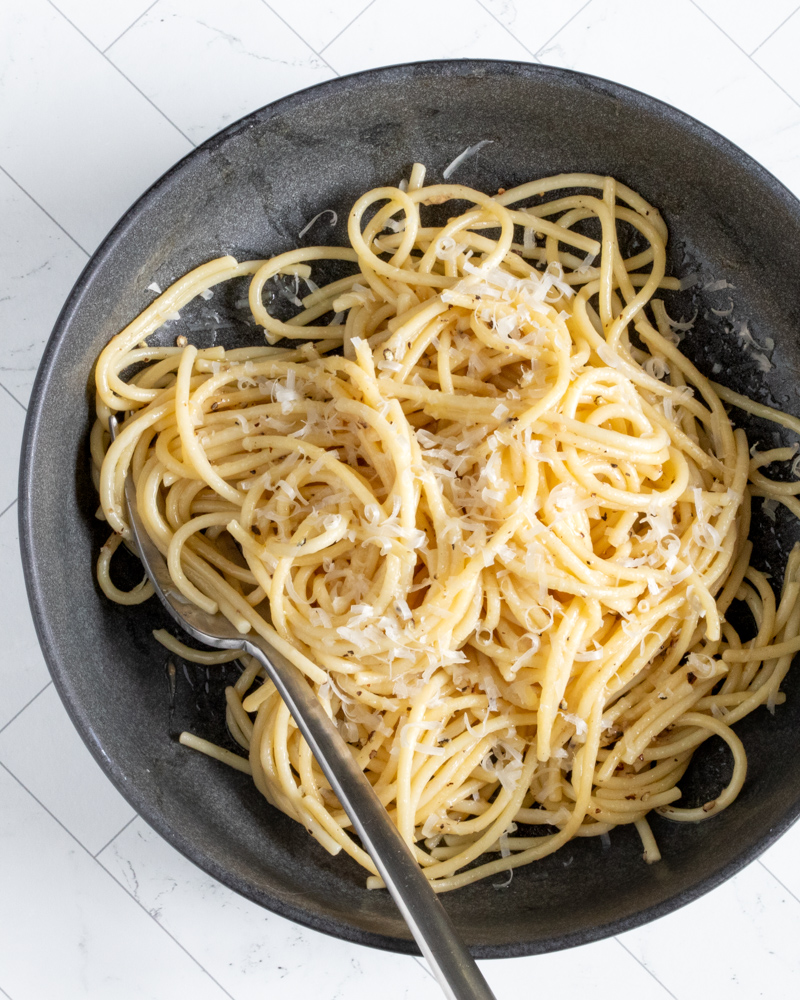
Cacio e pepe is a Roman pasta dish that literally means “cheese and pepper.” It’s a simple dish made with long pasta, Pecorino Romano and a healthy amount of coarsely ground black pepper. This version includes some butter and olive oil, but for a truly authentic experience, use only spaghetti, coarsely ground pepper, pecorino, and enough salted pasta cooking water to create a creamy sauce.
Pecorino is traditional for authentic cacio e pepe pasta, but a combination of Pecorino and Grana Padano is a nice alternative, or use Parmesan with the Pecorino. Pecorino is a sheep’s milk cheese—it is a bit stronger and sharper than a good quality Parmesan cheese. Grana Padano is slightly sweeter than Pecorino, but it is similar enough in texture and flavor to serve as a suitable substitute.
Is Parmesan Cheese Similar to Pecorino?
While the flavor and texture of Parmesan cheese are similar to Pecorino, there are some differences. Parmesan cheese is made with cow’s milk, and pecorino is made with sheep’s milk. Pecorino is also saltier and a bit sharper than Parmesan. If you have no other options, the cacio e pepe will still be delicious with a good-quality grated Parmesan cheese.
Since the texture and flavor of cacio e pepe pasta depend mainly on the cheese, use a good-quality pecorino Romano and grate it by hand. A microplane grater—the same one you use to zest your citrus—is ideal for shredding the cheese into fine, fluffy bits that melt into the pasta quickly and flawlessly. The hot pasta water turns the cheese into a clinging sauce you have to taste to believe.
Feel free to make some changes or additions. If you like a little heat, add a pinch of crushed red pepper flakes or a dash of dried Calabrian chile flakes. Or stir a handful of sliced cherry tomatoes and sliced basil into the pasta just before serving for a bright, fresh finish. I love this dish with regular spaghetti, but it would work beautifully with thin spaghetti, bucatini, or just about any long pasta.
Serve cacio e pepe with toasted garlic bread or focaccia with a Caesar salad or a tossed salad. It’s satisfying enough to be the main dish, but it can be a side dish as well. Serve alongside these sheet pan Italian sausages and peppers, chicken marsala, or Instant Pot chicken with sundried tomatoes.
What You’ll Like About This Dish
Simple ingredients. Just pasta, cheese, pepper, and butter—nothing complicated.
Fast to make. Ready in under 20 minutes from start to finish.
Authentic flavor. Pecorino Romano gives the dish its traditional bite.
Ultra creamy. Starchy pasta water melts the cheese into a luscious sauce.
Ingredient Notes
- Pasta: Spaghetti, bucatini, or another long pasta works best for coating in the creamy sauce.
- Pecorino Romano: Finely grated is essential for melting smoothly.
- Black pepper: Use freshly ground, slightly coarse, for the best aroma and flavor.
- Butter: Helps create the emulsified, glossy sauce.
- Pasta water: The starch is key—it binds the cheese and fat into a creamy consistency.
Steps to Make Cacio e Pepe
- Warm the olive oil and black pepper in a skillet to bloom the pepper’s flavor, then set aside.
- Boil the pasta in salted water until al dente; reserve some pasta water and drain.
- Return the skillet to low heat, add butter, then toss in the hot cooked pasta.
- Add the grated Pecorino and a few tablespoons of hot pasta water.
- Stir until the sauce becomes creamy and coats the pasta.
- Taste and adjust with additional salt or pepper as needed.
Tips
- Grate the cheese very fine so it melts smoothly and doesn’t clump.
- Use hot pasta water—the heat helps emulsify the sauce.
- Work quickly so the pasta stays hot enough to melt the cheese.
- Shake the pan instead of over-stirring if the sauce looks thick or pasty.
Recipe Variations
- Creamier version. Add a splash of heavy cream when tossing the pasta.
- More pepper-forward. Increase the pepper and bloom it longer in the oil.
- Parmesan blend. Mix Pecorino with Parmesan for a slightly milder sauce.
- Garlic twist. Add a smashed garlic clove to the oil while blooming the pepper, then remove before adding pasta.
Serving Suggestions
- Serve with a simple green salad.
- Pair with roasted vegetables or grilled chicken.
- Add a topping of extra Pecorino for richness.
- Choose crusty bread to scoop up extra sauce.
How to Store
Refrigerate: Store leftovers in an airtight container for up to 3 days.
Reheat: Warm gently in a skillet with a splash of water to loosen the sauce.
Note: Pasta with cheese sauces may lose some creaminess after refrigeration.
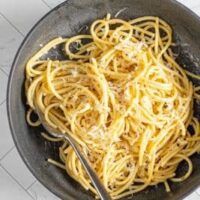
Cacio e Pepe
Ingredients
- 4 tablespoons olive oil, divided
- 1 teaspoon freshly ground black pepper, slightly coarse
- 8 ounces spaghetti, bucatini, or similar long pasta
- 2 teaspoons salt, for the cooking water, plus more for seasoning, as needed
- 2 tablespoons unsalted butter
- 2 ounces Pecorino Romano, finely grated
- 4 to 5 tablespoons of hot pasta cooking water
Instructions
- Put the olive oil and black pepper in a sauté pan or deep skillet and place it over medium-low heat. Heat the mixture for 2 minutes; remove from the heat and set aside.
- Bring about 3 quarts of water to a boil. Add 2 teaspoons of salt and the pasta. Cook following the package instructions for al dente pasta. Remove about 1/2 cup of the pasta water and drain the pasta in a colander.
- Place the pan with the olive oil and pepper over low heat. Add the butter and hot drained spaghetti and stir to coat. Stir in the grated cheese and about 4 to 5 tablespoons of the hot pasta cooking water. Stir until the cheese mixture is creamy and coats the pasta. Taste and adjust the seasonings with more salt and pepper, as needed.
- Serve in pasta bowls with extra grated cheese.
Nutrition
Disclaimer:
Our nutritional information is based on a third-party application that analyzes the ingredients list to determine the values. The information is meant to be helpful, but should be considered an estimate. Values may differ depending on measurements, brands, serving variations, and database availability.

